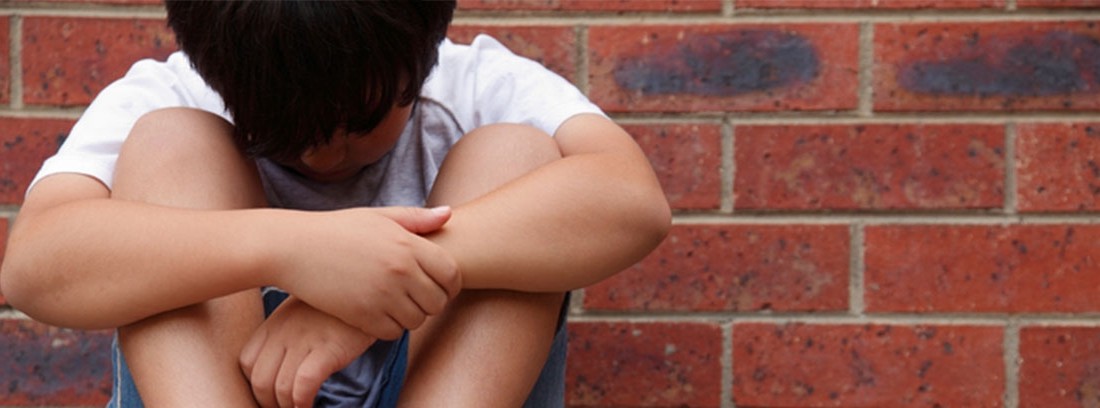How to act in childhood depression

In fact, between 4 and 6% of the child population has developed some degree of depression that has affected their normal development. If detected early, it responds very well to treatment.
In the case of the child
The special characteristics of the child make mood disorders manifest differently from the adult. The child does not have enough verbal skills, so it is important to assess his non-verbal language, actions replace thinking, so it is advisable to observe changes in the child's behavior. The degree of self-awareness and self-knowledge is not fully formed either, so they feel bad without really knowing why.
For depression to exist, the child must first have achieved the psychic function of sadness. Thus, in ages 2 to 5, it is difficult to distinguish what is depression from what is the birth of sadness, grief or nostalgia.
Detecting childhood depression is not easy. First, because the way in which depression manifests depends on the stage of the child's development. A young child, for example, will not be able to verbalize what is happening to him and will express himself mostly through hyperactive or withdrawn behaviors. On the other hand, an older child will be able, through his expressions, to give clearer clues of what he feels.
Factors that can promote childhood depression
- Stressful life events: very tight schedules, repetition of experiences of failure.
- Chronic hospitalization.
- Family situations: fights, bad relationship between parents, chronic illnesses of a relative, deaths or unstructured. The psychiatric family history must be taken into account or if one of the parents suffers from depression.
- Parenting style of parents: permissive or overly authoritarian.
- School: school failure and bullying.
- Serious emotional trauma experienced or suffered by the child.
When to suspect childhood depression
The manifestation of childhood depression can manifest itself in different ways:
- Internal symptoms: the child feels sadness, indecision, hopelessness, guilt, low self-esteem, memory and concentration problems.
- External symptoms: the child can isolate himself, become more lonely, it is difficult for him to relate. May be more irritable, disobedient and crying. School performance can be affected and we can even observe loss of appetite and sleep disturbances, as well as increased fatigue for no apparent reason. In general, the child's emotionality can be affected by showing less expressiveness, with a passive attitude to vital events.
Diagnosis
The general criteria for diagnosing childhood depression are the presence of moods characterized by sadness, withdrawal or irritability, and at least three of the following symptoms:
- Consequences in different areas (cognitive, affective, motor).
- Affectation of moods: the child feels sad, cries easily, is unable to enjoy things that he did before, and there is a loss of interest in his usual activities.
- In the cognitive aspect: distorted thoughts; the ability to understanding and attention.
- In the psychomotor aspect: they get tired for no reason and their activity level tends a lot or on the contrary they are hyperactive.
- Psychosomatic disorders: in sleep or eating, loss or increase of appetite and weight; headaches, vomiting, or abdominal pain.
- Constant tendency to disqualify and to manifest a low self-esteem ("I'm stupid", "I'm useless", "I'm not doing anything right").
- Demotivation and lack of strength for normal activities.
- Poor school performance: deterioration in studies, lack of concentration and frequent absences from school, social isolation, poor communication with others, problems relating to relationships, loss of interest in favorite games and school, distancing from friends and family.
- Talking about or trying to run away from home, suicidal thoughts or expressions, or self-destructive actions.
- Aggressive behavior: suffers attacks of anger or persistent hostility, gets irritated or sensitized to minor frustrations, throwing tantrums or tantrums more easily.
- High sensitivity to failure and rejection.
- Choose "sad endings" for your stories and performances.
- He regresses, talking like a baby or wetting the bed.
What can we do
Treatment
Treatment may combine psychotherapy and drugs, depending on the severity of the disorder. The drugs must be prescribed by the child psychiatrist and the monitoring of the child is carried out jointly with the pediatrician and the psychologist. Within psychotherapy, the cognitive-behavioral approach is one of the most used.
Cognitive therapy is based, broadly speaking, that in a given situation, we generate an idea that in turn produces a feeling or emotion. If in different situations our ideas are negative, our emotions will also be negative. In turn, self-esteem is managed; techniques for solving problems; promotion of Social Skills, since many times relationships with others have deteriorated a lot; relaxation to reduce and control anxiety, which often accompanies depression; techniques to control negative recurring thoughts that do a lot of damage. The child should not be treated in isolation, but family and school work should be done to analyze what is happening at the level of the child's social and family relationships and propose how to improve them.
Dra. Esther Martínez García Pediatric Specialist
- Ask questions and be attentive to what they say: especially if they are self-destructive comments that show low self-esteem.
- Establish limits and routines: an age-appropriate schedule that is safe for the child and does not create stress.
- Reassure him and let him know that he will have all the support he needs.
-
Seek professional help.
- It is difficult to detect. Until the age of 5, it is difficult to distinguish depression from sadness in children.
- Stressful family situations, chronic hospitalizations, repeated failures, serious emotional trauma ... can lead to childhood depression.
- The general criteria for diagnosing childhood depression are the presence of moods characterized by sadness, withdrawal or irritability.
(Updated at Apr 14 / 2024)